#from the mystery genre to the themes of grief and living to the presentation to the ludonarrative harmony
Text
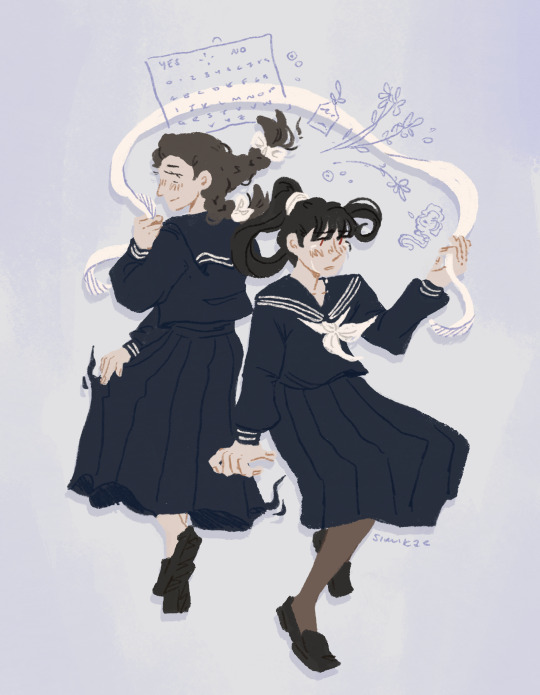
four hundred and ninety yen
#paranormasight#my art#my finished stuff#LONG SUFFERING SIGH FROM THE PEANUT GALLERY AS I GET INTO ANOTHER RANDOM ASS VN#anyway.#such a wonderful game was so so enraptured with it. everything abt it appealed to me specifically#from the mystery genre to the themes of grief and living to the presentation to the ludonarrative harmony#absolutely shot up to one of my favorite vns ever#all tjat to say. PLEASE check out the summary and get it if it sparks an interest at all its so worth it#very unique experience of a vn. love love love it
230 notes
·
View notes
Text




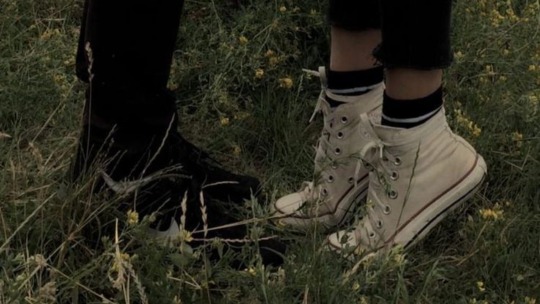
A WIP INTRO
St Jude's clung, sprawling and archaic, to the roughened countryside, elegant and menacing as a spider spinning her intricate web. Puck squinted against the oppressive grey of the overcast sky, hesitance an unfamiliar weight in her every step. Puck was not a hesitant person, it did not suit her. But St Jude's had never fascinated her the way she saw it capture the other locals. When pressed she couldn't produce an answer beyond 'full of rich, entitled pricks', but that wasn't it, not really. Puck had only been to St Jude's once, and the only thing she could remember about the short lived trip was the ocean. Not once in her entire life had it sounded so wrong to her ears than it did echoed through the halls of St Jude's Academy.
ABOUT
Title: Unrestful (place holder)
Genre: YA Rural Fantasy, Folklore Inspired
Themes: Isolation, Grief, Fate, Wilderness vs Civilization, Past Haunting The Present, Elitism vs Community + The Ocean is Fucking Scary, Innit?
Tropes: Dark Academia, Magic Tied To The Land, Queer Characters and Relationships, Boarding School Setting, Small Town Setting, Gratuitous Sun and Sea Motifs, Supernatural Mystery, Orphaned Siblings, Secret Society, Eldest Daughter as a Second Caregiver, Intergenerational Trauma, Enemies to Friends to Lovers, Wise Elder Mentor, Girls With Anger Issues, Eldritch Horror Vibes, The Outcast Archetype
BLURB
Puck knows magic, you don't just grow up in the small township of St Jude and not believe. It's in the rolling hills and black cliffs that have stood for a millenia against the turning of the world. It's in the way you can hear a high, wild laughter on the wind when it blows in from the ocean. It was in her mother's song and her bees, and it's in her brother's uncanny dreams, their sibling's quick silver instincts, her own clever hands. But most importantly, it's in St Jude's Academy, where every so often, someone goes missing, and every so often, someone returns wrong.
Alice never believed in magic until she was shipped off to boarding school, but now, at St Jude's Academy, where the sound of the ocean is ever present and the walls of the buildings feel like every stone was pulled from a time of knights and dragons, magic seems like something she could almost touch. But the magic of St Jude's has a price, and Alice could be the one to pay it if she doesn't unravel the secrets woven into those ancient stones. If she lets the careful whisperings of the locals be drowned out by the grand possibilities of everything that could be.
And then the first body washes up on the shore and Alice can feel the way it changes the campus at St Jude's. And then the people turn on each other, on her brother, and Puck finds St Jude to be unsteady footing for the first time in her life. And then the ocean calls and Puck and Alice find their fates reluctantly entangled as they both follow the song.
TAGLIST (ask to be +/-)
@dreamwolves @inkingfireplace @kaiusvnoir @saltwaterbells @touchingmadness @andromedatalksaboutstuff @thelittlestspider @writingmoth @serenanymph @silhouettecrow @stesierra @ashfordlabs
#wip intro#wip: unrestful#work in progress#writeblr#marrow writes#wip introduction#writing#finally gotten around to starting my intros#i think ill do a pp intro to introduce the characters#ch: puck#ch: alice#aesthetic#pl: st jude township#wlw#lesbian romance
35 notes
·
View notes
Text

REVIEW
Funeral Daze by Dorian Box
Danny Teakwell #2
Easily stands alone and a great story though I missed reading Psycho Tropics and the introduction to the series.
What I liked:
* Danny Teakwell: widow, grieving, surf shop owner, talented surfboard maker, good friend, helpful, kind, generous, there for those in need and Jessica is definitely in need
* Jessica Jewell: preteen, grew up in the funeral business, a bit quirky, strong, outspoken, big-hearted, good friend, stands out from the crowd, truthful, good salesperson, has a lot to deal with
* The trust that develops between Danny and Jessica as the story progresses
* The way Danny “sees” Jessica and communicates with her openly and honestly
* That I had fun reading it even though there were some heavy issues discussed
* The way Jessica and Danny helped one another
* The influence of Sari, the deceased wife of Danny, even after she is gone
* Bennie “Fink” Finkel: law school graduate, a wildcard, good friend, has quite a few issues but a major part of the story
* Erin Delonia: female surf winner who lives in California and comes by the surf shop to tell Danny she rode one of his boards to win a contest – potential love interest
* Grady Banyon, Shannon-the waitress, Detective Rodrigues, and other supporting characters
* That not all the bad guys were horrible and that not all the good guys were necessarily good
* All of it really except…
What I didn’t like:
* Who and what I was meant not to like
* Thinking about addiction and how it changes people
* Yago – a loose cannon and a merciless killer that enjoyed his job a bit too much
Did I like this book? Yes
Would I read more by this author? Yes
Thank you to the NetGalley, the author, and Friction Press for the ARC – This is my honest review.
5 Stars
BLURB
"[A] novel that takes both light and dark elements to present a fantastically engaging, emotionally resonant story in a deeply humorous and satirical fashion. Unmissable reading." — 2023 Readers' Favorite Silver Medal for Humor Fiction
From the author of the multi-award-winning Emily Calby Series
SUMMER 2000. When down-and-out surfer and former lottery winner Danny Teakwell was framed for a grisly murder, he got help from a family of wacky morticians that included seven-year-old embalming expert Jessica Jewell (Psycho-Tropics ). Five years later the tables are turned when Jessica shows up, alone and desperate, seeking shelter. Her parents suddenly sold their family funeral home and vanished.
Danny’s not in a good place. Grieving the recent death of his wife, he’s let life crumble. He reluctantly agrees to take the girl in for one night, but the willful twelve-year-old convinces him to join her investigation to find her parents and get back their funeral home. The trail leads into a ghastly criminal enterprise of corpses, caskets, and killers. As the bond between the unlikely pair grows, it becomes unclear who’s saving who and which one is really running the show.
Hilarious and heartwarming mystery and suspense with a walloping conclusion, Dorian Box brings his unique blend of darkness and light to life in this zany joyride through the Sunshine State.
PRAISE AND ACCOLADES FOR FUNERAL DAZE
"FUNERAL DAZE manages to be laugh-out-loud funny, heartwarmingly tender, and full of lively action and suspense, all at once – a thoroughly entertaining and engaging read." — IndieReader (5 Stars, IR Seal of Approval)
“The story unfolds at a crisp and steady pace, with plenty of thought-provoking moments once 12-year-old Jessica enters the scene, offering Danny surprisingly mature reflections on tragedy and a knockout mystery to occupy his time. … Funeral Daze delivers an appealing spin on the mystery genre through rich characterization and an abundance of insight throughout.” — 2023 Publishers Weekly BookLife Prize Semifinalist in Mysteries/Thrillers
“[A]n exceptional read. … Box balances some incredibly heavy themes, such as loss, grief, child displacement, and physical and emotional trauma with moments of genuine levity that come in the form of intelligent humor. The writing is more often brilliant than not …” — Jamie Michele for Readers’ Favorite (5-Star Seal)
“A hilarious page-turner that effortlessly blends crime, humor and South Florida beach culture. … Award-winning author Dorian Box (Psycho Tropics, The Hiding Girl) has always employed brilliant doses of well-timed levity in crime fiction, but he pulls out all the stops for this laugh-out-loud caper. — BestThrillers
“A perfect beach read, this zany mystery has the thrills, quirky characters, juicy plot twists, and gripping conclusion you're looking for!” — Reedsy Discovery
“Time and again, Box has proven he can write a tense thriller that is funny, dark, and completely endearing. It’s the perfect combination of a smart storyline and characters that keep you reading well after bedtime. Fantastic!” — NetGalley
“Funeral Daze is a macabre and hilarious novel that intersects the lives of several bizarre and oddly compelling characters. … Dorian Box masterfully directs the story into a series of unpredictable and uproarious events that are deliciously ironic, unexpectedly thought-provoking, and always edgy and dark.” — D. Donovan, Senior Reviewer, Midwest Book Review
AUTHOR BIO
Dorian Box is the pen name for A.J. McClurg, a former law professor. He likes to blend dark themes with heart, hope and humor with a goal of evoking tears and laughs over the same book.
His novels have received awards and honors such as: Writer's Digest Award for Genre Fiction; Publishers Weekly BookLife Prize Semifinalist (twice); IndieReader Discovery Award for Fiction; Feathered Quill Medal for Mystery/Suspense; Best Psychological Thriller of the Year and Finalist, Best Legal Thriller of the Year (BestThrillers); National Indie Excellence Award Finalist; and Readers’ Favorite medals in three different categories (Suspense, Humor, and New Adult Fiction).
His nonfiction books include an Amazon Editors’ Favorite Book of the Year. As an academic, he's been interviewed as a legal expert by National Public Radio, the PBS Newshour, and many other sources.
McClurg (or maybe it's Box) lives out his childhood rockstar fantasies singing and playing in Memphis cover bands.
https://dorianbox.com/
#Dorian Box#Danny Teakwell 2#NetGalley#Friction Press#Mystery#Thriller#Humor#Satire#Fiction#Murder#Crime
0 notes
Text
January 2024 Reading Review
I read 7 books and 2 short stories in January and wanted to spew my thoughts into the void
The Books:
Witch King by Martha Wells (414 pages)
The Sunbearer Trials by Aiden Thomas (405 pages)
Holes by Louis Sachar (240 pages)
The Reapers are the Angels by Alden Bell (225 pages)
Feed by Mira Grant (571 pages)
Deadline by Mira Grant (581 pages)
Blackout by Mira Grant (512 pages)
The short stories:
As Yet Unsent by Tamsyn Muir (26 pages)
The Mysterious Study of Doctor Sex by Tamsyn Muir (25 pages)
My Thoughts:
Witch King
I loved Murderbot Diaries so I was really excited to see Martha Wells also writes fantasy, and this book has a really cool magic system regarding witches and demons and demon offspring that can move their souls into different human bodies under certain circumstances. There are some cool things to think about in this book, regarding self image and reflection, friendship, love, sacrifice, family of origin, and family of choice.
I wanted to love this but I will absolutely settle for liking it. I thought the characters were all really great but something wasn't working for me in the pacing and the jumping back and forth between past and present. Individual scenes and story beats were great though. Somewhere in the 3.5-4 stars range for me.
The Sunbearer Trials
Very cute Middlegrade/YA meso-american mythology style spin on something like Percy Jackson meets Hunger Games. The main character is a young trans half god but his god mom isn't one of the biggest baddest coolest gods so he thinks he's a nobody and turns out to be the big special boy etc. It was cute, I liked how many queer characters were included and nobody made a big deal about it, and the bully character(s) didn't misgender or deadname anyone but were still assholes. There were some clunky trans allegories that could have just been text and some missed opportunities for better character development but overall I liked it and will definitely read the sequel. 3.5 stars.
Holes
I read this in like 7th grade and remembered it being really fucking good and turns out middle school also had impeccable taste. It's just a really good book. There's so much book per book too, we follow essentially 3 different converging storylines and fall in love with 5-8 wonderful characters all in the span of less than 250 pages. Absolutely 5 stars.
The Reapers Are the Angels
Woof. This is a book that takes place in several years after a zombie apocalypse and the main character is a girl somewhere around 16 years old that's been orphaned and her adopted brother died and she has to move on from her place of safety when zombies get to it. I know a lot of zombie books are supposed to be really dark and gritty and edgy but this one was just weird to me. I think there are things to be considered about the nature of humanity, obsession vs love, loss and grief, and pretty typical zombie genre themes and such here, but I didn't care for it. A generous 2.5 stars. Did not continue the series.
Feed/Deadline/Blackout
Also zombie books, a trilogy. Reading this in 2024 was bizarre at times. It's set decades after the zombie "apocalypse" where the US has basically "learned to live with the virus" and follows a team of reporters who score the job of reporting on the campaign of a republican presidential candidate. If you can make it past the soul-crushing comparisons to the state of modern US politics and public health, this is a very fun series. It's also grim and edgy and dark but never loses its sense of humor. It's weirdly more a political conspiracy series with zombies than a zombie series, but in a good way? Almost every reporter runs a blog with some kind of pun in the name. The author makes some BOLD choices and had me gasping aloud sometimes, crying other times, and laughing my ass off in between. Overall 4.5 stars.
Short Stories:
Both of them are from the Locked Tomb series and were perfect. You should read the Locked Tomb series. Seriously. It's so good. If you're reading this, you're on tumblr, so I know you have at least one of the following if not all of them: religious trauma, colonialism/imperialism trauma, at least one gay situationship that almost killed you, and/or a thing for hot girls with swords. 5 stars.
1 note
·
View note
Text
A Story of Yesterday Book Summary
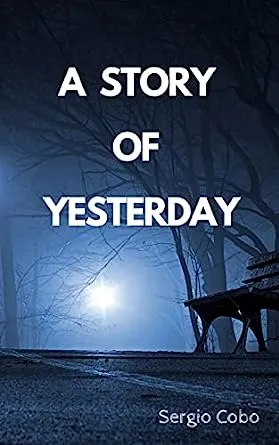

A Story of Yesterday Book Summary
A Story of Yesterday is a captivating novel written by an acclaimed author. Set in the early 1900s, the story follows the struggles of a young couple who come from different social classes but fall in love and get married against all odds. However, their happiness is short-lived as they face various challenges, including financial difficulties, societal constraints, and family conflicts.
As the plot unfolds, the couple's strength and determination are put to the test, and they must make difficult choices to overcome the obstacles thrown their way. The book explores themes of love, perseverance, social class, and family values, and offers a glimpse into the cultural norms and values of the time period.
The main characters, Mary and John, are well-developed and relatable, and the reader is able to empathize with their struggles and root for their success. Mary, the protagonist, is a strong and independent woman who defies societal expectations and fights for her dreams. John, her husband, is a hardworking and honorable man who loves her deeply and supports her throughout their journey together.
The book is written in a simple and straightforward style, making it easy to follow and engage with the story. The author also employs various literary devices, such as foreshadowing and symbolism, to add depth and complexity to the plot. The use of descriptive language and vivid imagery makes the setting and characters come to life, transporting the reader to another time and place.
A Story of Yesterday is a timeless classic that has stood the test of time. It is a must-read for anyone who enjoys historical fiction or romance novels. With its universal themes and relatable characters, it offers insights into the human condition and will leave a lasting impression on the reader.
Book Description
A Story of Yesterday, written by acclaimed author Jane Smith, is a gripping novel set in the small town of Millville, where life seems simple on the surface but is tainted by a dark past. The novel introduces us to the main character Anna, a young woman struggling to come to terms with her mother's death and navigate her own path in life. As Anna uncovers the secrets of her hometown, she begins to unravel the mysteries of her past.
The story takes place in the present day, with flashbacks to Anna's childhood that provide a deeper understanding of her character and motivations. Throughout her journey, Anna encounters a cast of memorable supporting characters, including her childhood friend Mark, who harbors a secret love for Anna, and the town's reclusive librarian, who holds the key to many of the town's secrets.
The novel is a blend of mystery, coming-of-age, and romance, offering something for readers of all genres. Smith's writing is descriptive and engaging, painting a vivid picture of Millville that will transport readers right into the heart of the town. The novel also explores themes of grief, forgiveness, and redemption, making it a deeply emotional and thought-provoking read.
A Story of Yesterday is a must-read for anyone looking for a captivating and heartwarming tale that will have them turning pages late into the night.
Character Analysis
In "A Story of Yesterday," the novel's characters are central to the story, and their motivations drive the plot forward. The three main characters in the book are the protagonist, the antagonist, and the love interest, each with their unique motivations and obstacles to overcome.
The protagonist, John, is a young man from a small town who has big dreams of success and adventure. Throughout the story, he faces numerous challenges that test his resolve and motivate him to keep pushing forward. John's motivation is his desire to succeed in life and make something of himself.
The antagonist, Mr. Smith, is a wealthy businessman who wants to control everything in his town. He sees John as a threat to his power and will stop at nothing to prevent him from achieving his goals. Mr. Smith's motivation is his fear of losing control and his desire to maintain his status in the town.
the love interest, Mary, is a compassionate and caring young woman who helps John throughout his journey. She is motivated by her love for John and her desire to see him succeed.
the characters in "A Story of Yesterday" are well-developed and complex, with motivations that drive the story forward. The book's themes of love, success, and power are explored through the characters' experiences, making for a compelling read.
Protagonist
The central character of A Story of Yesterday is Jane, a young girl who is forced to confront the harsh realities of life at an early age. Throughout the novel, we follow Jane's journey as she struggles to come to terms with the abrupt loss of her parents, and the subsequent upheaval of her life.
At the beginning of the story, Jane is portrayed as a timid and introverted child. However, as she is forced to navigate the complexities of her new life, we see her mature and grow in unexpected ways. Jane's journey is one of resilience and perseverance, as she learns to overcome adversity and find strength in herself.
One of the most striking aspects of Jane's story is her resilience in the face of adversity. Despite the trauma of losing both her parents, she remains determined to succeed and make a better life for herself. This determination is exemplified through her commitment to her studies, and her eventual success in securing a scholarship to attend college.
Throughout the novel, we see Jane develop a close bond with her aunt, who becomes a mentor and guiding force in her life. This relationship is central to Jane's growth as a character, as she learns to trust and rely on others for support.
Jane's journey in A Story of Yesterday is one of growth, resilience, and determination. Through her struggles and triumphs, we see the transformative power of perseverance and the importance of community in navigating difficult times.
Antagonist
In "A Story of Yesterday," the main antagonist is portrayed as a manipulative and cunning individual. Through their actions and words, they constantly present obstacles and challenges for the protagonist to overcome. The antagonist's motivations are rooted in their desire for power and control, often at the expense of others.
One example of the antagonist's manipulation is seen when they convince the protagonist's closest ally to turn against them. This causes the protagonist to suffer a major setback and lose an important ally in their journey. The antagonist uses their charisma and persuasive abilities to turn people against the protagonist, further isolating them from sources of aid and support.
Another challenge presented by the antagonist is their constant scheming and plotting against the protagonist. They utilize their vast network of allies and resources to thwart the protagonist's every move, making it increasingly difficult for them to achieve their goals. The antagonist's tactics range from outright aggression to subtle manipulation, making them a formidable opponent.
Despite the antagonist's efforts to sabotage the protagonist, their ultimate downfall comes from their own arrogance and overconfidence. Their underestimation of the protagonist's abilities and determination leads to their own undoing.
the antagonist in "A Story of Yesterday" is a complex and dynamic character who adds depth and tension to the plot. Their actions and motivations provide an interesting contrast to the protagonist's journey, and their presence serves as a constant reminder of the challenges that must be overcome in order to achieve success.
Analysis
A Story of Yesterday by Jane Smith is a novel that explores various themes and employs numerous literary devices to bring the story to life. Smith uses symbolism to convey the central ideas of the book. In addition, the author employs a range of literary techniques to create a well-rounded work of fiction that can appeal to a broad audience.
The novel explores the theme of love, both platonic and romantic, as well as the consequences that can arise when love is misguided or not fully understood. Smith also touches on the theme of regret and how it can impact a person's life and relationships. Furthermore, the author explores the theme of coming-of-age and how the process can be difficult but ultimately rewarding.
Smith uses symbolism throughout the book to convey these themes. For example, a recurring symbol is a rose that, depending on the context, can represent love, beauty, or regret. Another symbol is a butterfly that represents transformation and growth as characters learn and evolve throughout the story.
Smith also makes use of various literary devices to make the novel more engaging and thought-provoking. One technique used is the foreshadowing of events to create tension and anticipation. the author makes use of flashbacks to provide insight into the characters' motivations and thought processes.
The author also utilizes imagery to create vivid descriptions of the settings and characters. By using sensory details, Smith immerses the reader into the world of the story and enhances their understanding of the characters and their emotions.
A Story of Yesterday is a novel that effectively employs themes, motifs, and literary devices to create a work that is both entertaining and thought-provoking. The novel's messages are conveyed through the careful use of symbolism and literary techniques, making it an engaging read for audiences of all ages.
Themes
In A Story of Yesterday, the author explores various themes that resonate with readers and connect the story to the real world. One of the central themes is the passage of time and its impact on individuals and society. Through the journey of the protagonist, we witness the challenges and obstacles that come with growing older and how it affects relationships and personal identity.
Another prevalent theme is the importance of family and human connection. The book portrays the significance of having a support system and the bonds that can be created between people. We see this through the protagonist's relationship with their family and how it evolves throughout the story.
the book delves into the theme of acceptance and forgiveness. The story highlights the importance of acknowledging one's mistakes and learning to move forward. This is shown through the characters' interactions and their ability to come to terms with their past actions.
The theme of mortality and the fleeting nature of life is also explored in the book. The author portrays the sense of urgency that can come with realizing that time is limited and the need to make the most of the present moment.
A Story of Yesterday presents a powerful message about the universal themes that shape our lives and connect us all as humans. Through its exploration of these themes, the book provides insight and value to readers looking to reflect on their own experiences and the world around them.
Symbolism
"A Story of Yesterday" is a novel that heavily relies on the use of symbolism to convey its central themes and ideas. Throughout the book, the author utilizes various symbols and metaphors to represent deeper meanings and messages.
One of the most prominent symbols in the book is the recurring image of a butterfly. The butterfly is used to represent the theme of transformation and growth, as it symbolizes the caterpillar's journey to becoming a butterfly. The protagonist's journey throughout the book can also be seen as a form of transformation, as she grows from a timid and reserved character to a strong and confident individual. The butterfly symbol also highlights the idea of mortality and the fleeting nature of life, as butterflies have a short lifespan.
Another important symbol is the use of water, which is used to represent the theme of purity and renewal. Water is shown throughout the book as a form of rebirth and cleansing, as it provides a sense of renewal and refreshment to the characters. The protagonist's journey can also be seen as a form of cleansing, as she sheds old habits and ways of thinking to emerge as a new person.
Furthermore, the author also utilizes the symbol of light to convey the theme of hope and optimism. The use of light in the book is often associated with positivity and the idea of a brighter future. This symbol is important as it provides a sense of guidance and direction to the characters, as they strive to navigate through difficult situations.
the use of symbolism in "A Story of Yesterday" plays a crucial role in conveying its central themes and ideas. Through the various symbols and metaphors utilized in the book, the author provides readers with a deeper understanding of the story's underlying messages and themes.
Literary Devices
In addition to its plot and characters, A Story of Yesterday also stands out for its compelling use of literary devices that help to enhance its overall themes and symbolism. One of the most prominent techniques used by the author is foreshadowing. Throughout the book, there are several instances where certain events or details are hinted at before they actually occur, creating a sense of tension and anticipation for readers. For example, early on in the story, there is a reference to a looming storm on the horizon, which later serves as a metaphor for the turmoil that the characters will face.
Another important device used in the book is metaphor. The author employs a variety of metaphors to convey deeper meanings and emotions to readers. For instance, the central character's journey is often described as a river flowing towards a certain destination, which serves as a metaphor for the inevitability of fate and the difficulty of overcoming past traumas.
In addition to foreshadowing and metaphor, A Story of Yesterday also utilizes symbolism to great effect. The book's use of recurring symbols such as the number seven or the color red serve to reinforce its themes and connect various parts of the story together. The subtle symbolism also adds an element of mystery to the story, inviting readers to interpret its hidden meanings.
A Story of Yesterday's skilled use of literary devices helps to elevate it from a simple narrative to a layered and thought-provoking work of literature. By carefully employing foreshadowing, metaphor, and symbolism, the author is able to create a rich and engrossing world that rewards careful reading and interpretation.
Reviews
As one of the most anticipated books of the year, A Story of Yesterday has garnered plenty of attention from literary reviewers and publications. The book has received mixed reviews, with some critics hailing it as a masterpiece and others criticizing its execution.
Many reviewers have praised the author's ability to create a vivid and engaging world, describing the book as a "sweeping epic" and a "riveting tale." Some have even compared it to classic works of literature, such as To Kill a Mockingbird and The Great Gatsby.
However, other critics have been more critical of the book, citing issues with pacing and character development. Some have even called it "overhyped" and "disappointing."
- John Doe of The New York Times called the book "a tour de force of storytelling."
- Emily Smith of The Guardian praised the book's "lush descriptions" but criticized its "slow pace."
- Mark Johnson of Publishers Weekly called the book "a moving tribute to the power of love and the human spirit."
it seems that A Story of Yesterday is a book that has sparked plenty of debate and discussion among literary circles. Whether you love it or hate it, there's no denying that it has made a significant impact on the literary world.
Details
If you're interested in the publication history, author, and influences behind A Story of Yesterday, you're in the right place. First published in 2010, A Story of Yesterday was written by the critically acclaimed novelist XYZ. The book belongs to the genre of historical fiction and takes place during the XYZ era.
XYZ has authored several other books, and A Story of Yesterday is regarded as one of his most notable works. The book has won several awards, including the prestigious ABC Award for Fiction and the DEF Award for Historical Fiction.
Many scholars consider XYZ to be an important literary figure, and his work has received critical acclaim from around the world. A Story of Yesterday is said to be inspired by XYZ's own family's history, making the book all the more personal and emotionally intimate.
The book's setting and characters are heavily influenced by historical events, and the author's attention to historical detail is evident throughout. One of the book's main themes is the impact of history on individuals and the choices they make.
The book's reception among readers has been largely positive, with many praising the author's skill in weaving together complex historical events with emotional character arcs. The book has been translated into several languages and has sold millions of copies worldwide.
A Story of Yesterday is a captivating work of historical fiction that is beloved by readers and critics alike. If you're interested in learning more about the author or the book's historical setting, there are several resources available online and in print.
News about A Story of Yesterday
A Story of Yesterday book has been making waves ever since it was published. The book has been adapted into various forms of media, ranging from movies to television shows. Recently, news has surfaced that a movie adaptation of the book is in the works. The project is under development, and the studio behind the movie is keeping the details under wraps, creating anticipation and excitement among fans of the book.
A Story of Yesterday has received several awards and nominations for its exceptional story and writing. Recently, the book was shortlisted for the prestigious Booker Prize, a top honor in the literary industry. Critics and literary enthusiasts alike are lauding the book's writing style and captivating plot, praising the author for taking readers on a thrilling journey.
There have also been rumors of an upcoming television adaptation of the book. A major streaming platform is in talks with the book's publishers to acquire the rights to produce a TV series. It has been reported that the show is in the pre-production stage, and the platform is looking for top-tier actors to bring the characters to life.
Recently, the author of A Story of Yesterday gave an interview where they revealed their sources of inspiration for the book. The author cited Japanese folklore and mythology as the inspiration behind the book's plot and themes, making the book even more intriguing for readers who are interested in cultural history.
Moreover, the audiobook version of A Story of Yesterday has been released on various platforms, allowing readers to listen to the book on-the-go. The audiobook version has been narrated by a renowned voice actor, who has brought the characters to life with their exceptional voice acting skills.
Read the full article
#AStoryofYesterdayBookdescription#AStoryofYesterdaybooknotes#AStoryofYesterdaycharacteranalysis#AStoryofYesterdayreviews
0 notes
Text

Goodbye December and the year 2022. What a wonderful year for me book-wise. I am going to enjoy writing my post for my upcoming book goals for the year. But for now let's focus on wrapping up December.
My book goal: 7 books and I went overboard and read 18 books.

These three were in my goal list but I only finished 2. The First to Die at the end is a 4-star ⭐⭐⭐⭐ read. Almost as good as "They Both Die at the End" (thank you Adam Silvera for those references to the future and for realizing how the books tie in together) but the love story to me isn't as captivating as it was between Rufus and Mateo. There is so much that you can do with a word where deathcast exists and I enjoyed being able to explore that more in-depth and all the questions it raised for the medical community in particular. Us as an audience knowing that Deathcast is real and having the knowledge of how it works makes it so difficult to read this as society experiences Deathcast for the first time.
Objectively, Dead Silence is a 3.5 to 4-star read but personally, for me I have it as one of my favorites for the year. I loved the characters and I was so intrigued by the mystery and atmosphere of the book. It haunted me for days and I wanted so badly to watch a movie similar to the book. The issues for the book lie in the buildup and structure. We get to the plot really fast and the creepiness immediately sets and I needed that build-up to care for these characters. The book transitions from past to present and I understand why but I actually think it would have made more sense to follow a more linear path to allow for that character development. I know the time transitions were supposed to build up the mystery but the problem is we're supposed to believe in the red herring the author presents us but it doesn't work because I don't actually believe the character is capable of doing what they were accused of. Also, the deaths of characters weren't very emotional for me because of the lack of build-up. The reveal at the end of the mystery was perfect though and hinted at while not being obvious.
I could not get through Night of the Living Rez as hard as I pushed myself. I hadn't realized it was a collection of short stories and I tend to really struggle with enjoying short stories because I am very character driven and tend to dislike being pulled out of the story and being asked to care for some new characters when I am still focused on another. DNF.

So imagine my surprise at how much I liked this one. I gave it a 3.5 star rating out of 5 because there are some stories that aren't as strong but this book packs an emotional punch and I left several of the stories with the thought "what just happened?!?!?" I felt the theme of grief, the crumbling of one's internal self, reflecting on mistakes, and the overwhelming anxiousness of your life falling apart so deeply in many of these stories. I was happy to only have to go through a snippet because you realize that leaving the characters that their story isn't changing. They are stuck in this perpetual cycle of loss and instability and this snipped into their life is all you need. There's one story in here particularly that is a 5-star read. But there are a good few that I would have left out which sadly lowers the rating.

Lessons in Chemistry ⭐⭐⭐⭐4.25. One of the funniest books I have read this year. Unique protagonist and inspirational.
Chasing the Boogeyman ⭐⭐⭐⭐ 4.0 I cannot believe this wasn't a true-crime book. It felt so real and if it weren't for the last chapter with the author's self-insertion that was clearly dramatized I would have bought it completely. Really captures the effect a serial killer can have on a small community.
Wrong Place Wrong Time ⭐⭐⭐⭐ 4.0 Wonderful mystery and thriller but best of all I think this book captures the power of motherhood and having more trust in ourselves.
I'll Be Gone in the Dark ⭐⭐⭐⭐4.5. I am rating this for its genre because this book is certainly not more enjoyable than Lessons in Chemistry to me but for its genre it deserves a high rating. Well executed, doesn't glorify the killer and instead focuses more on the investigative hard work and people impacted by the Golden State Killer. It's a shame Michelle died before she could complete it herself personally or see the outcome of her work.
Roses in the Mouth of a Lion ⭐⭐⭐⭐4.25. Emotionally devastating and while I cannot speak to the accuracy of growing up Muslim in Corona, New York I can speak to how beautiful this book is. Very lyrical and beautiful descriptions. I go to Corona regularly and I could perfectly envision the train station and 7 train. As a child of immigrants myself Bushra perfectly captures the friction of growing up in the USA and exploring new ideologies and facets of identity (sexuality) that aren't discussed in conservative cultures and how it clashes with our parent's upbringing. I encourage people to pick this up and enjoy. Warning for homophobia. I do wish more had been done with the ending. I really feel like this book needed an epilogue. I know likely the answer would have still been awful but I would have accepted it.
0 notes
Text
Dissertation Ideas.
Initial ideas:
· Puppetry?
· Backgrounds
· The feelings associated with being lost.
· The dark mysteries of horror literature – H.P. Lovecraft / Edgar Allan Poe / Hideyuki Kikuchi.
Stop motion films
I feel with Most of these ideas that I could really research and understand them, the processes, and the elements within that relate to animation. However, I feel like most of them are quite generic and common research areas in the film industry. I could research into them and find an area of which I want to continue and adapt into a dissertation, but first I want to relate my personal attachment to these suggestions presented.
Stop motion films:

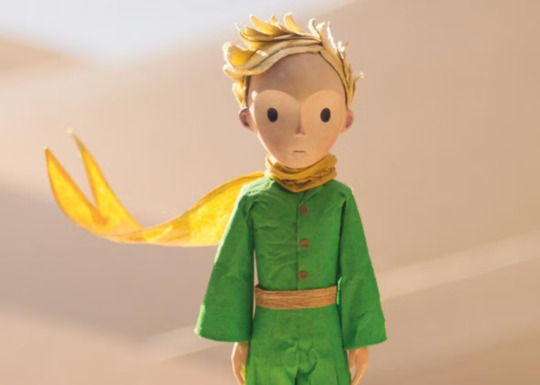
Stop motion films for myself have been a common influence in my life. We have Aardman Studios who create many stop motion entertainment for children’s programs and films such as ‘Shaun the Sheep’, ‘Timmy Time’, ‘Wallace and Gromit’, ‘Robin Robin’ and many more.
Aardman isn’t the only stop motion studios I enjoy, other films I take much inspiration from include: The little Prince, Fantastic Mr. Fox, Coraline and Rudolph the Red-Nosed Reindeer. This Limited group alone show the great diversity of types of Stop motion as well as the contrasting genre types. I’m a great fantasy / horror lover so I would love to delve more into the Tim Burton area of Stop Motion.
But what question could I ask myself about stop motion? What would be an inspiring motion to follow for this film area?
What defines a stop-motion film?
What scales of stop-motion rigs are there?

Backgrounds:
Backgrounds are an important part of films in my opinion. They help identify the time of day, Era, Genre, Season, and other important elements that can be identified separately from the main story line. This is an interesting topic as they have introduced live backgrounds in series such as the Mandalorian. This is where they have huge screens on set that react and show real time locations in time with the acting.


I feel like It would be interesting to research into the meanings and hidden symbology in backgrounds. Or to research how real life locations can be used to influence and aid the process of world building. The above shot of the Millennium Falcon is actually filmed where I live, so it’s amazing to see how they’ve taken some basic shots of my town and changed it into this beautiful wild planet scene.
How can we use real locations in the compositing of backgrounds for films?
Is using a real location true imagination in film?
Puppetry:

The one type of film that I must say is my favourite is Classic Puppet films. Labyrinth, The Dark Crystal, The Never Ending Story, The muppet movie, Alien and Star wars are a selection of my favourites. Even Harry potter had Puppets in it!
I think its the attention to detail in the puppets design that draws me to these films, for set expressions to be able to show a multitude in a small movement shows the skill these designers have. I find it really interesting however that do we call puppetry animation? Is the movement of these in-animate objects manipulated by hidden people counted as a style or type of animation? Or is it just its own subject?

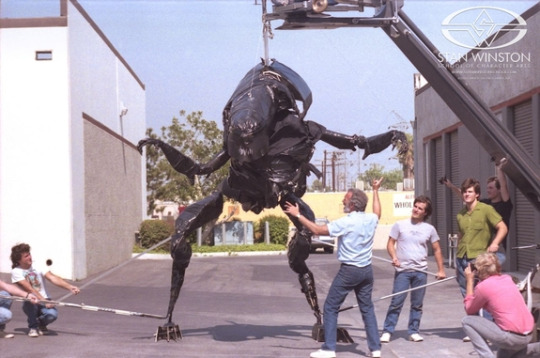
This really excites me to think of the potential of research I can make in this field and what other experts think.
Can we classify puppetry as a form of animation?
What differentiates Puppetry from stop-motion animation?
Feelings of being lost or found.
A common theme that I’ve seen in films / games and other entertainment productions is the underlying story of ‘finding something’ or ‘being lost’. Why do we as an audience feel so connected to that feeling? Is it the sense of celebration and adrenaline in finding the answer / source / missing thing, or is it the grief and empathy of loosing something / someone / hopelessness. It has always peaked my interest that these two contrasting elements invoke such a powerful feeling with us.


Emotion to me is the best way to get something to connect to an audience. We will feel the emotions that are relatable to us most in production and maybe that’s what drives us to either hate or love a piece of work. A film wont provoke a great response if the audience feels nothing, there will be no connection or emotion towards it. However, a film that pushes the boundaries of our emotions could also push people to hate or love it. I believe connection to the audience is vital to push the reality of the story line, the possible truth of it being a real thing.
Why must we evoke such strong emotions in film?
Why do we as an audience enjoy the intense feelings manipulated by film?
0 notes
Photo
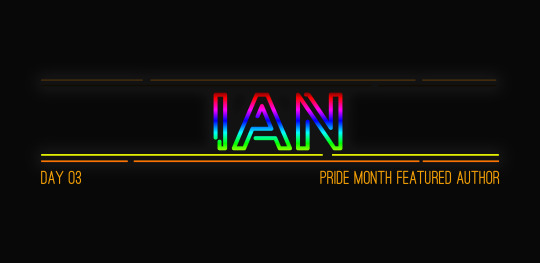


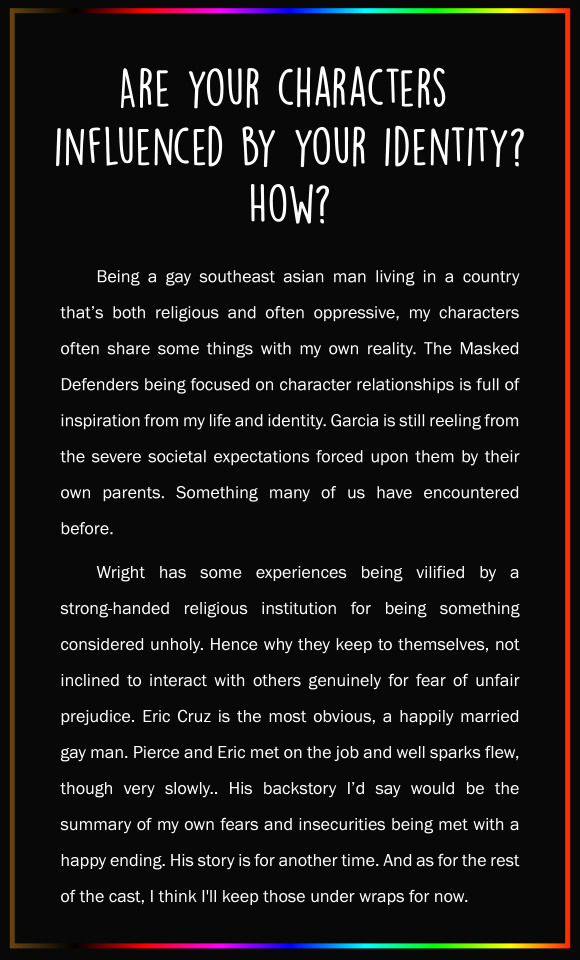




Day 3 of the Pride Month featured interviews! Presenting the absolute sweetheart... Ian! :chinhands:
Ian, author of The Masked Defenders
Pride Month Featured Author
The City of Cascadia is in peril as a new super powered villain rocks the ocean city. Couple that with mysterious disappearances and one very persistent vigilante, the city is close to collapsing into chaos. Luckily for its citizens, a team of superheroes is already on hand to deal with the mounting crisis. The newly reformed Masked Defenders.
Though it’s up to fate, and their ability to work together, to whether or not they’re capable of such a feat. Take on the role as a government agent tasked with ensuring that these superheroes succeed in their efforts to restore the peace. Make friends, or enemies, and maybe find something more in a city rife with danger at every turn. And maybe uncover secrets that were never meant to see the light.
Demo: The Masked Defenders, Dartun Station (TBA)
Tags: superhero
(INTERVIEW TRANSCRIPT UNDER THE CUT)
Q1: Tell us a little bit about your project(s)!
The Masked Defenders is my personal take on the superhero genre. It follows a powerless government agent tasked with helping a less than stellar team of superheroes. Through their own grit and determination, and oftentimes pure reckless impulse. As with all stories there’ll be moments where the agent has chances to change for the better or the worse. :) Government Intrigue, Action and a healthy helping of character relationships.
Dartun Station is a horror work that focuses on isolation, paranoia and unrelenting fear. You take on the role of a grief-stricken detective trying to salvage what remains of their reputation by solving a simple cold case way up north. It explores themes of identity while also turning some horror conventions on their head.
Q2: Why interactive fiction? What drew you to the medium?
Interactive fiction, I feel, is a good way to dive deeper into the story. From the characters, plot and setting, interactive fiction allows me to create a more vibrant and responsive world than what is provided by traditional mediums. My first interaction that hooked me on the world of IF’s was The Victorian Detective Series i stumbled upon a few years back.
Q3: Are your characters influenced by your identity? How?
Being a gay southeast asian man living in a country that’s both religious and often oppressive, my characters often share some things with my own reality. The Masked Defenders being focused on character relationships is full of inspiration from my life and identity. Garcia is still reeling from the severe societal expectations forced upon them by their own parents. Something many of us have encountered before.
Wright has some experiences being vilified by a strong-handed religious institution for being something considered unholy. Hence why they keep to themselves, not inclined to interact with others genuinely for fear of unfair prejudice. Eric Cruz is the most obvious, a happily married gay man. Pierce and Eric met on the job and well sparks flew, though very slowly.. His backstory I’d say would be the summary of my own fears and insecurities being met with a happy ending. His story is for another time. And as for the rest of the cast, I think I'll keep those under wraps for now.
Q4: What would you like to see more of in LGBT+ fiction?
More body positivity, people of color (specifically southeast asian and south asian stories) and healthy relationships. And the removal of the bury your gays trope, we have grown past the need of unhappy endings.
Q5: What or who are some of your biggest inspirations?
Agatha Christie, TJ Klune, Leigh Bardugo and Tierra/13 Leagues. And not to forget, Amelie the musical and the movie. Always start crying when that comes on.
Q6: What’s a super vague spoiler for your current project?
Apartment 40, Star Towers, 15th Street. And a code to decipher :) L'zgPecoipPsiBswCmefiVriDrqgxxNhQgd - Idhvuyr
Q7: Lastly, what advice would you give to your readers?
Keep on reading, loving and living. Fight for what you know is right. And most importantly be kind.
#if: events#Pride Month 2021#pride month#queer authors#queer creators#queer fiction#interactive fiction
85 notes
·
View notes
Text

Hello and welcome to my updated intro for The Writers! The story has developed a lot since I first introduced it, so I figured it was time for another.
Taglist (let me know in the replies/an ask if you want to be added): @writing-is-a-martial-art @hiddenhistoria @perditism @writingbyjillian @writeherewaiting @oasis-of-you @adie-dee @absolute-nonsense-scribblings @blindthewind @mmoonflower @ecwrenn @wildswrites @the-moving-finger-writes @vorskra @wizardfromthesea @generalblizzarddreamer @fuyugomori @sleepy-night-child @foxy-lisard @kait-writes

Genre: dystopia (...I think)
POV: third person past (The Writers), rotating first person present (Apotheosis), third person past (Ephemerality)
Themes: destiny vs free will, grief, identity, romance, rebellion
Tropes: forbidden love (twice), enemies-to-allies-to-lovers, one lover waiting for the other, uncovering how their world works, rebelling against a power, discovering a forgotten past, the Chosen One (subverted), discovering you have a power, found family (in small doses), bittersweet ending (but the epilogue kisses it better)

In the City, it is widely known that free will does not exist. Instead, there is the Compound: a mysterious place where the Writers dictate the lives, loves and losses of everyone in the City. Little is known about them, except that they never enter or leave the Compound, and that they have been there for longer than living memory can recall.
Penelope Ingeld was destined from birth to be a side character, living in the shadow of designated protagonist (and her best friend) Lillian. What she didn’t bargain for is Lillian dying before their story had even begun.
Whether at the hands of a rogue Writer, a twist in the plot or – the simplest, yet most groundbreaking explanation – a demonstration that the Writers cannot control everything, the fact remains that Lillian is dead. And now Penelope must step into her shoes, unsure whether her actions are truly her own even as she attempts to discover the truth behind the Writers and the City. However, the discoveries she makes about herself and her world are something she never could have imagined…

A haughty boy who wants to test his limits. A disillusioned girl who wants to throw off the mask of devotion. A meandering soul who wants to find their place. A conflicted girl who wants to understand her identity.
The first prequel, Apotheosis, tells the story of the Writers and the founding of the City. It follows these four through their childhoods and into young adulthood, through their meetings and romances, through the founding of the City and the rifts that it sews between them. It is an origin story, but also a story in itself, of four people so different from one another realising they make up a group different from everyone else in one mysterious way. Of their ambitions and uncertainties and flaws, swirling in the maelstrom that will one day lead to the story of Penelope, Lillian and Arya’s City.
A more detailed intro can be found here :)

The second prequel, Ephemerality, is more difficult to explain without spoilers, but the principle is that it tells the full story of the memories Penelope gets back in the main narrative. It details her relationship with Lillian and catalyses the main plot, as well as introducing Lillian as an individual and love interest beyond the subject of grief that she becomes in The Writers.

Due to the 10-picture limit (*grumbles* tumblr...) please see this post and this post for character intros!
32 notes
·
View notes
Photo

title | sea cryptid wip (working)
genre | ya contemporary fantasy, horror (?), romance
setting | neptune island, wa in the puget sound
themes | small town lore, bad girl, rich boy, sea monsters and other cryptids, campy government conspiracies, hate to love slow burn
pov | first person present tense
status | planning
summary |
18 year old Marilyn Walton will do anything to leave Neptune Island.
To support her grief-stricken mother in the wake of her father’s death, Marilyn thieves and cons just as she learned from Dad. But to meet her first college tuition payment due at the end of July, she has something bigger in store: stealing a boat from one of the richest families on Neptune. The heist goes south, however, when she’s caught by the teenage son of the old money Spellmeyers, Augustus, but instead of turning her in, he makes her a deal to help him hunt down 230 year old buried treasure worth upwards of a million dollars and split the boon.
Tides turn when their search for the rumored treasure starts to lead them down a path far more sinister than anticipated. Just as men in black start their chase for something her father stole, Marilyn and Gus discover a hideous sea monster and the horrifying tests being conducted at the government facility on the nearby skerry. If they don’t watch their step, they may never escape the island—nor the waters that surround it.
characters |
marilyn walton: the mc. the daughter of two con artists. secret soft girl inside a shotgun shell. calls herself a “double feature” (has both daddy AND mommy issues, thinks that’s very sexy of her). please contribute to her gofundme so she can get and education uwu.
augustus spellmeyer: the love interest. super rich kid with nothing but fake friends. swim team star but like, his parents also paid his way into an ivy and his arrogance is Grappling™ with that knowledge. the best dressed straight boy on the western seaboard. proud simp.
doris: the sea monster. sort of a mermaid but in a new age post modern hyperfeminist mysterious socially isolated uncanny valley but alluring creature from the black lagoon sort of way. loves girls and wants a makeover montage more than anything. biting is her love language.
elodie tillman-choi: the frenemy. former best friend of marilyn because they had “a falling out.” recovering aspiring girlboss (don’t worry, she still gaslights and gatekeeper plenty). monsterfucker. likes to talk about how she’s “going to new haven in the fall.”
dr. wesch: the psychiatrist. treats half the town because it’s Tiny, including gus, and therefore knows everything. kind of a milf. never works Fridays because she is “researching.”
the men in black: ???. not affiliated with the sony pictures film. definitely tied up in some sketchy stuff. three dudes living out of an old van that reads REPAIRMEN in big letters. needs to learn boundaries.
please let me know if you want to be tagged!
#camp nanowrimo#camp nano july 2021#my wip#wip#wip intro#wip moodboard#wip aesthetic#sea cryptid wip#wip: scwip#oc: Marilyn walton#oc: gus spellmeyer#oc: doris#oc: elodie#oc: dr. wesch#ocs: men in black#my edits
11 notes
·
View notes
Photo


🏕️ CAMP NANOWRIMO ‘21 (VAGUE) WIP INTRO ↳ THE GOLDILOCKS PROTOCOL
GENRE.
Science Fiction ⭐ Space Opera ⭐ Cyberpunk ⭐ Fantasy
THEMES/MOTIFS.
LGBT+ Cast ⭐ Found Family ⭐ Mysteries of the Universe ⭐ Antagonistic Cults ⭐ The People in Power Are Evil ⭐ The Gradual Building of the Perfect Crew ⭐ Enemies to Lovers ⭐ Monsters ⭐ Expensive Bounties
SETTING.
The majority-human settled (sometimes fictional) planets of the Andromeda galaxy. Set a few centuries ahead in as of yet undetermined future.
CURRENT WC: 20k+
EDIT GOAL: 10k+
CONTENT WARNINGS.
Violence and Gore, Manipulation, Adult Humour/Themes, Mentions of Abuse, Religious Themes, Strained Familial Relationships, Grief
BRIEF OVERVIEW.
There are two sides to the coin of THE PROTAGONIST.
⭐ Their past: part of the famous Citadel Knights, riding the crest of the capital as a starfighter.
⭐ Their present: scavenger and merchant, living out of their ship after their untimely dismissal.
The fall from grace seemed in permanent effect — until on a supply run, when they happen across two people cryo-coma’d in a nearby ship, drained of almost all its power... and their ticket back to climbing the rungs of the citadel social web again. Cue cross-galaxy chases by masked creatures, jobs enticing all from pirates to mercenaries, S-tier bounties and a mystery surpassing the whole universe.
CHARACTER INTROS and EXCERPTS are incoming... once i actually brainstorm more of this story...
👀 here’s some possible character builds... 👀
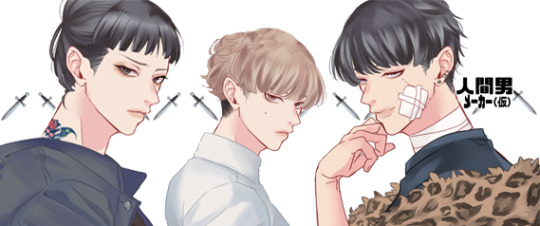
i was inspired by a bunch of friends to tackle camp nano, all can be found in this tag!! idk if i'll be invested or succeed bc i write at a snail’s pace and I'm permanently unwell BUT i'm excited to return to an old project! if u remember for my 100 followers i revealed an older wip, that i named “TRIPLE STAR.” i've decided i hate that and it sucks so welcome to THE GOLDILOCKS PROTOCOL!!!!!! what could it mean.. let’s find out on april 1st 2021... (btw they probably will get a name this isn’t like tenet... but THE PROTAGONIST is kinda fun for now 👀)
WIP TAG.
LINK TO NANO - LET’S BE FRIENDS!
LET ME KNOW if you would like to be added to the taglist! i’ll tag with my old TS taglist but inbox/dms are open as always to be removed or added
TAGLIST.
@aetherwrites @avi-burton-writing @kitblogsthings @abeanstories @ezrathings
SOURCES.
x / picrew
#amwriting#wip intro#original writing#wip introduction#writeblr#i can't remember how to tag things anymore HELP...#wip: the goldilocks protocol#wip: tgp#can't decide the tag but it's calmmmm#at least it's been ANNOUNCED.
26 notes
·
View notes
Photo

Best of SXSW 2021.
From properly good Covid comedies to an epic folk-horror doc and an Indigenous feminist Western, the Letterboxd Festiville team reveals their ten best of SXSW Online.
We dug out old lanyards to wear around the house, and imagined ourselves queuing up the block from The Ritz (RIP). We dialled into screenings and panels, and did our level best to channel that manic “South By” energy from our living rooms.
The SXSW festival atmosphere was muted, and that’s to be expected. But the films themselves? Gems, so many gems, whether shot in a fortnight on the smell of an oily stimulus check, or painstakingly rotoscoped over seven years.
When we asked SXSW Film director Janet Pierson what she and her team were looking for this year, she told us: “We’re always looking for films that do a lot with little, that are ingenious, and pure talent, and discovery, and being surprised. We’re just looking for really good stories with good emotional resonance.” If there was one common denominator we noticed across this year’s SXSW picks, it was a smart, tender injection of comedy into stories about trauma, grief, unwanted pregnancy, chronic health conditions, homelessness, homophobia and, yes, Covid.
It’s hard to pick favorites, but here are the ten SXSW features and two short films we haven’t stopped thinking about, in no particular order.

Recovery
Directed by Mallory Everton and Stephen Meek, written by Everton and Whitney Call
“Covid 19 is in charge now” might be the most hauntingly funny line in a SXSW film. In Recovery, two sisters set out on a haywire road trip to rescue their grandmother from her nursing home in the wake of a severe Covid 19 outbreak. There’s no random villain or threat, because isn’t being forced to exist during a pandemic enough of a threat in itself? If ever we were worried about “Covid comedies”, SXSW managed to flush out the good ones. (Read about the Festiville team’s other favorite Covid-inflected comedies, including an interview with the directors of I’m Fine (Thanks for Asking).)
Alex Marzona praises the “off-the-charts chemistry” between leads Mallory Everton and Whitney Call. Best friends since they were nine, the pair also wrote the film, with Everton co-directing with Stephen Meek. Every laugh comes from your gut and feels like something only the cast and crew would usually be privy to. “You can tell a lot of the content is improvised, which just attests to their talent,” writes Emma. Recovery doesn’t make you laugh awkwardly about how awful the last year has been—rather, it reminds you that even in such times there are still laughs to be had, trips to be taken, family worth uprooting everything for. Just make sure you’ve packed enough wet wipes for the road, and think long and hard about who should babysit your mice. —EK

The Spine of Night
Written and directed by Morgan Galen King and Philip Gelatt
Don’t get too attached to any characters from its star-studded cast—nobody is safe (or fully-clothed) in The Spine of Night’s raw, ultra-violent and cynical world. Conjured over the last seven years, directors Philip Gelatt and Morgan Galen King’s rotoscoped epic recaptures the dazzling imagination and scope of their influences Ralph Bakshi and Heavy Metal. Approaching an anthology-style structure to explore how ‘absolute power corrupts absolutely’—a proverb more potent now than when Gelatt and King began their project—the film packs a franchise’s worth of ideas in its 90-minute runtime. Though the storytelling justifiably proves itself overly dense for some, it will find the audience it’s after, as other Letterboxd members have declared it “a rare treat” and “a breath of fresh air in the feature-length animation scene”. For sure, The Spine of Night can join Sundance premieres Flee and Cryptozoo in what’s already a compelling year for unique two-dimensional animation. —JM
Kambole Campbell caught up with Gelatt and King (who are also Letterboxd members!) during SXSW to talk about animation inspirations and rotoscoping techniques.
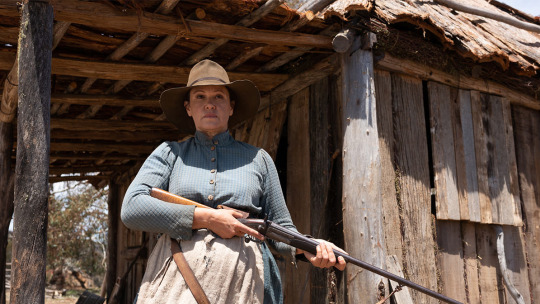
The Drover’s Wife: The Legend of Molly Johnson
Written and directed by Leah Purcell
Snakes, steers and scoundrels beware! Writer-director-star Leah Purcell ably repurposes the Western genre for Aboriginal and female voices in The Drover’s Wife. Molly Johnson is a crack-shot anti-heroine for the ages, in this decolonized reimagining of a classic 1892 short story by Henry Lawson. And by reimagining, we mean a seismic shift in the narrative: Purcell has fleshed out a full story of a mother-of-four, pregnant with her fifth, a missing husband, predatory neighbors, a mysterious runaway and a young English couple on different paths to progress in this remote Southern land. Purcell first adapted this story for the stage, then as published fiction; she rightly takes the leading role in the screen version, too.
As a debut feature director, Purcell (Goa-Gunggari-Wakka Wakka Murri) already has a firm grip on the macabre and the menacing, not shying away from violence, but making very careful decisions about what needs to be depicted, given all that Molly Johnson and her family are subjected to. She also sneaks in mystic touches, and a hint of romance (local heartthrob Rob Collins can take us on a walk to where the Snowy widens to see blooming wildflowers anytime). Judging by early Letterboxd reviews, it’s not for everyone, but this is Australian colonization through an Indigenous feminist’s eyes, with a fierce, intersectional pay-off. “Extremely similar to a vast majority of the issues and themes explored in The Nightingale,” writes Claira. “I’m slowly realizing that my favorite type of Westerns are Australian.” —LK, GG

Swan Song
Written and directed by Todd Stephens
Udo Kier is often the bridesmaid, rarely the bride. Now, after a lifetime of supporting roles ranging from vampires and villains to art-house muse, he finally gets to shine center-stage in Swan Song. Kier dazzles as a coiffure soothsayer in this lyrical pageant to the passage of queer times in backwater Sandusky, Ohio. “He is absolutely wonderful here,” writes Adrianna, “digging deep and pulling out a mesmerizing, deeply affecting and emotionally textured performance, proving that he’s an actor with much more range than people give him credit for.”
A strong supporting cast all have melancholy moments to shine, with Linda Evans (Dynasty), Michael Urie (Ugly Betty) and Jennifer Coolidge (Legally Blonde) along for the stroll. Surreal camp touches add joy (that chandelier, the needle drop!) but by the end, the tears roll (both of joy and sadness). Writer-director Todd Stephens ties up his Sandusky trilogy in this hometown homage, a career peak for both him and Kier. Robert Daniels puts it well, writing that Swan Song is “campy as hell, but it’s also a heartfelt LGBTQ story about lost lovers and friends, vibrant memories and the final passage of a colorful life.” —LK
Leo Koziol spoke with Todd Stephens and Udo Kier during SXSW about Grace Jones, David Bowie and dancing with yourself.

Islands
Written and directed by Martin Edralin
Islands is a Mike Leigh-esque story that presents a Canadian Filipino immigrant family full of quirk and character, centered around Joshua, a reticent 50-year-old homebody son. The story drifts in and out of a deep well of sadness. Moments of lightness and familial love make the journey worthwhile. “A film so Filipino a main plot device is line-dancing,” writes Karl. “Islands is an incredibly empathetic film about what it’s like to feel unmoored from comfort. It’s distinctly Filipino and deals with the psychology of Asian culture in a way that feels both profound and oddly comforting.” In a year in which we’ve all been forced to physically slow down, Islands “shows us how slow life can be,” writes Justin, “and how important it is to be okay with that.” Rogelio Balagtas’s performance as Joshua—a first-time leading role—won him the SXSW Grand Jury Award for Breakthrough Performance. —LK

Ninjababy
Directed by Yngvild Sve Flikke, written by Flikke with Johan Fasting and Inga H. Sætre
Ninjababy is as ridiculous as its title. When 23-year-old Rakel finds herself accidentally pregnant, scheduling an abortion is a no-brainer. But she’s way too far along, she’s informed, so she’s going to have to have the baby. The ensuing meltdown might have been heartbreaking if the film wasn’t so damn funny. Ninjababy draws on the comforting and familiar (“Lizzie McGuire if she was a pregnant young adult,” writes Nick), while mixing shock with originality (Erica Richards notices “a few aggressive and vulgar moments [but] somehow none of it seemed misplaced”).
An animated fetus in the style of Rakel’s own drawings appears to beg and shame Rakel into motherhood while she fights to hold onto her confidence that not wanting to be a mother doesn’t make her a bad person. Ninjababy’s greatest feat is its willingness to delve into that complication: yes, it’s righteous and feminist and 21st-century to claim your own body and life, but that doesn’t mean it’s easy to turn away from something growing inside of you. It’s a comedy about shame, art, finding care in unlikely places—and there’s something in it for the gents, too. The titular ninjababy wouldn’t leave Rakel alone, and it’s unlikely to leave you either. Winner of the SXSW Global Audience Award. —SH

The Fallout
Written and directed by Megan Park
Canadian actress Megan Park brought the youthful wisdom of her days on the teen drama series The Secret Life of the American Teenager to her first project behind the camera, and it paid off. Following the scattered after-effects of a school shooting, The Fallout may be the most acute, empathetic depiction of childhood trauma on screen in recent memory. “It sneaks up on you with its honesty and how it spends time with its lead, carried so beautifully by Jenna Ortega. Even the more conventional moments are poignant because of context,” writes Kevin L. Lee. Much of that “sneaky” honesty emerges as humor—despite the heavy premise, moments of hilarity hang on the edges of almost every scene. And Ortega’s portrayal of sweet-but-angsty Vada brings self-awareness to that humor, like when Vada’s avoidant, inappropriate jokes with her therapist reveal her desperation, but they garner genuine laughs nonetheless.
In this debut, Park shows an unmatched understanding of non-linear ways that young people process their pain. Sometimes kids try drugs! Sometimes they scream at their parents! But more often than not, they really do know what they want, who loves them, and how much time they need to grieve (see also: Jessie Barr’s Sophie Jones, starring her cousin Jessica Barr, out now on VOD and in theaters). The Fallout forsakes melodrama to embrace confusion, ambiguity and joy. Winner of both the SXSW Grand Jury and Audience Narrative Feature Awards, and the Brightcove Illumination Award. —SH

Ludi
Directed by Edson Jean, written by Jean and Joshua Jean-Baptiste
When Ludi begins, it’s quiet and dreamy. The film’s opening moments conjure the simple pleasures of the titular character’s Haitian heritage: the music, the colors, the people. Ludi (Shein Monpremier) smiles to herself as she starts her morning with a tape recording her cousin mailed from Haiti to Miami, and listens as her family members laugh through their troubles before recording an upbeat tape of her own. But that’s where the dreaminess ends—Ludi is an overworked, underpaid nurse picking up every shift she possibly can in order to send money home. Writer-director Edson Jean fixates on the pains and consequences of Ludi’s relentless determination, which comes to a head when she moonlights as a private nurse for an old man who doesn’t want her there.
Ashton Kinley notes how the film “doesn’t overly dramatize or pull at false emotional strings to make its weight felt. The second half of the feature really allows all of that to shine, as the film becomes a tender and empathetic two-hander.” George’s (Alan Myles Heyman) resentment of his own aging body steps in as Ludi’s antagonist. Jean throws together jarring contrasts: George throwing Ludi out of the bathroom, followed by Ludi’s memories of home, followed by another lashing out, followed by a shared prayer. The tension is unsustainable. By interspersing the back-breaking predicament of a working-class immigrant with the sights and sounds of the Caribbean, Ludi elegantly, painfully reveals what the cost of a dream can be. —SH
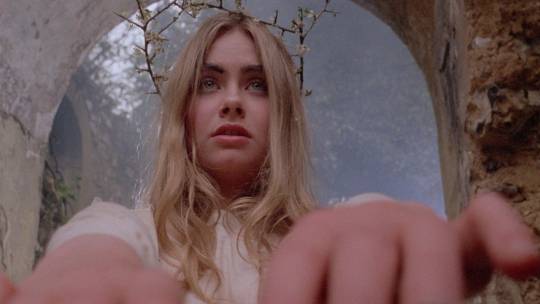
Woodlands Dark and Days Bewitched: A History of Folk Horror
Written and directed by Kier-La Janisse
Building on the folk horror resurgence of films like The Witch and Midsommar, Kier-La Janisse’s 193-minute documentary Woodlands Dark and Days Bewitched is a colossal, staggering undertaking that should school even the most seasoned of horror buffs. “Thorough is an understatement,” says Claira.
Combining a historian’s studied, holistic patience with a cinephile’s rabid, insatiable thirst, the film, through the course of six chapters, broadens textbook British definitions, draws trenchant socio-political and thematic connections, debunks myths and transports viewers to far-flung parts of the globe in a way that almost feels anthropological. As Jordan writes, “Three hours later and my mind is racing between philosophical questions about the state of hauntology we generationally entrap ourselves in, wanting to buy every single one of the 100+ films referenced here, and being just a bit in awe of Janisse’s truly breathless work.” An encyclopedic forest worth losing yourself in��get ready for those watchlists to balloon. Winner of the SXSW Midnighters Audience Award. —AY

Introducing, Selma Blair
Directed by Rachel Fleit
There’ll likely be some level of hype when this intimate collaboration between actress Selma Blair and filmmaker Rachel Fleit comes out later in the year on Discovery+, and that’s okay, because that is Blair’s intention in sharing the details of her stem-cell transplant for multiple sclerosis. There’d be little point in going there if you are not prepared to really go there, and Introducing, Selma Blair is a tics-and-all journey not just into what life is like with a chronic condition, a young son, and a career that relies on one’s ability to keep a straight face. It’s also an examination of the scar tissue of childhood, the things we are told by our parents, the ideas we come to believe about ourselves. “I almost felt like I shouldn’t have such intimate access to some of the footage in this documentary,” writes Andy Yen. “Bravo to Selma for allowing the filmmakers to show some truly raw and soul-bearing videos about her battle with multiple sclerosis that make us feel as if we are as close to her as family.” —GG
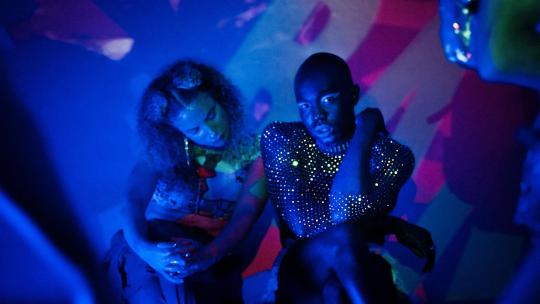
Femme
Directed by Sam H. Freeman and Ng Choon Ping
I May Destroy You fans, rejoice: Paapa Essiedu, who played Arabella’s fascinating best friend Kwame, takes center stage in Sam H. Freeman and Ng Choon Ping’s intoxicating short film Femme. It’s a simple premise—Jordan, a femme gay man, follows his drug dealer (Harris Dickinson, mastering the sexually repressed brusque young man like no one else) home to pick up some goods on a night out. Except, of course, it’s not that simple. The co-directors build a world of danger, tension and electricity, with lusciously lensed scenes that lose focus as the threat rises. Frankie calls it “hypnotizing and brutal and gorgeous” and we couldn’t agree more. A crime thriller wrestling with hyper-masculinity seen through the eyes of an LGBTQ+ character, with a sucker-punch ending to boot, the world needs more than twenty minutes of this story. —EK

Play It Safe
Directed by Mitch Kalisa
If you (unwisely) thought that the vulnerable, progressive environment of drama school would be a safe space for Black students, Play It Safe confirms that even a liberal bunch of actors (and their teacher) are capable of being blind to their own egregiously racist microagressions. Mitch Kalisa’s excellent short film explores structural prejudice head-on, in an electric acting exercise that rests on where the kinetic, gritty 16mm camera is pointing at every pivotal turn. At first, we’re with Black drama student Jonathan Ajayi as he receives the assignment; then we are with the rest of the class, exactly where we need to be. “Literally in your face and absolutely breathtaking,” writes Nia. A deserving winner of the SXSW Grand Jury and Audience narrative shorts prizes. —GG
Follow the Festiville team on Letterboxd
#sxsw#south by southwest#sxsw 2021#sxswonline#SXSW Film#janet pierson#film festival#letterboxd#letterboxd best
7 notes
·
View notes
Text
The Storm Sister Review- Book Two

Book 2 of the Seven Sisters Series
Author: Lucinda Riley
Publication date: 2015
Genre: Historical Fiction, Romance
My review for The Seven Sisters[Book One] here.
Good Reads Rating: 4.3/5
Personal Rating: 3/5
Synopsis:
Ally D'Aplièse is about to compete in one of the world's most perilous yacht races, when she hears the news of her adoptive father's sudden, mysterious death. Rushing back to meet her five sisters at their family home, she discovers that her father - an elusive billionaire affectionately known to his daughters as Pa Salt - has left each of them a tantalising clue to their true heritage.
Ally has also recently embarked on a deeply passionate love affair that will change her destiny forever. But with her life now turned upside down, Ally decides to leave the open seas and follow the trail that her father left her, which leads her to the icy beauty of Norway...
There, Ally begins to discover her roots - and how her story is inextricably bound to that of a young unknown singer, Anna Landvik, who lived there over 100 years before, and sang in the first performance of Grieg's iconic music set to Ibsen's play 'Peer Gynt'. As Ally learns more about Anna, she also begins to question who her father, Pa Salt, really was. And why is the seventh sister missing?
Following the bestselling The Seven Sisters, The Storm Sister is the second book in Lucinda Riley's spellbinding series based loosely on the mythology surrounding the famous star constellation.
~~
In The Storm Sister written by the amazing Lucinda Riley, we set sail on another adventure. This adventure being the second oldest sister of the six, Alcyone, or better known as Ally.
While she has two passions in life that are sailing and music, she lives her life being a professional sailor, competing in regattas which are sporting events that consist of boats or yacht races. It was from her adoptive father, Pa Salt, that she inherited an interest in sailing, both of them spending a lot of time out on the lake during Ally’s growing up.
The book follows the same formula as the first one[The Seven Sisters]. The reader gets introduced to Ally and gets a snapchat/wordly story board of her life before she hears that Pa Salt had died. She then reunites with her sisters at Atlantis and gets given her letter and clues to her past. The scenes in Atlantis that are the same as Maia’s at the start of her book don’t get too repetitive, but I found myself skimming over the parts when she was with Maia or Maia and her sisters together. But of course, those parts are written from the perspective of a different character and coloured by her thoughts and her emotions, so that was interesting for me to compare her mental state to Maias. I think by this point in the book, even though it was just at the beginning, I already knew I liked Maia’s story better for I felt, personally, I related to her more than Ally, but found it interesting just the same.
The narrative then of course switches between present and past as Ally eventually decides to explore her roots. There’s a catalyst that starts Ally’s exploration into her past. I won’t say what it is to try and avoid spoilers, but suffice it to say it shocked me completely. If anything my thoughts and feelings about Ally from the previous chapters had grown into sympathy and feeling sorry for her.
Ally’s clues about her past lead her to my home country: Norway, yet she spends most of her journey in Bergen which is apparently not Norway? Like, people from Bergen don’t say they’re from Norway.[Correct me if I’m wrong for I have never been to anywhere except Australia and the United States. I should really do my research.] Any who, Ally goes to Bergen because her history ties her to the famous Norwegian composer Edvard Grief, who was born in Bergen.
The back-stories set in this series I find more interesting than the chosen sister’s in the present; there’s more romance and things going on which I love, and I seemed to be better introduced to the characters! But in this case I much prefered Isabella and Laurant’s story in The Seven Sisters than Anna’s and Pip’s in this book.
The past chapters that are connected to Ally and her birth all revolve around the premiere of Henrik Ibsen’s play Peer Gynt, the musical score being written by Edvard Grief. The story follows the main and talented singer in the play, Anna, and the equally talented violinist/flute player in the orchestra, Pip. And with that their lives interlock and a budding romance between them begins. And finding out now, this wouldn't’ be a classic Lucinda Riley book without their love naturally having complications.
There is a lot of loss and misery in both the past and present scenes. In general there seems to be a common theme of death, that doesn’t go into extreme detail mind you, and complicated love stories running through the series so far. That should be a negative thing though, for it is life, yet there is also plenty of love and warmth. It’s not all depressing.
I was glad to see another theme going in this book is the strong female characters. In the tales from the past they’re often struggling with what society or their parents want or expect from them versus following their own feelings or passions. At first I thought this was headed in the same direction as the past story from the first book where the woman gives in to the wishes of her parents instead of following her own dreams, but was pleasantly surprised when it didn’t.
I admire the sacrifices some of these women make because of this loyalty, respect, and ultimately love for their parents. But at the same time as I admire it, it also really bothers me since these days I find the parenting rules and guidelines very different. That being said, while in the past story Anna ultimately decides to follow her heart, her path is not easy.
There are a lot of similarities between Anna and Ally’s personalities but the important one to thin about is their ability to be strong in difficult situations. Both of them are able to rise out of misery and find their purpose in life. It is a powerful message that any reader can reflect on and relate to their life.
Definitely a worthy follow-up, also giving us more insight into the D’Apliese family. And once again the amount of research that has gone into it is astounding, and it shows. *french kiss*
The second novel in Riley's Seven Sisters series has taken me on another amazing journey. I love that each story explores a new historical figure, Edvard Greig; Edvard being set in the background while the fictional characters guided the story along. Also, the mystery of Pa Salt and the overall part he plays in the girls’ pasts is again touched upon.
I'm not sure that I enjoyed Ally's story as much as Maia's, but this is still very solid and entertaining.

#the seven sisters#the storm sister#book two#book review#book reccomendation#book blog#blogger#best selling#lucinda riley#romance#historical fiction#book series#tumblr post
3 notes
·
View notes
Text
A review of “Juno Steel,” a hilarious and emotionally-driven queer space opera
I recently began work as a DoorDash driver, and you know what that means: living in fear because you have to constantly expose yourself to shitheads who aren’t wearing masks? Yes. And also, lots of time in the car with nothing to do but listen to stuff. Which means I decided to go back and binge the first two seasons of one of my favorite podcasts, The Penumbra Podcast’s “Juno Steel” series. “Juno Steel” is an enjoyable, enthralling story about home, mental illness, and what it means to be good.
The Penumbra Podcast, created by Sophie Takagi Kaner and Kevin Vibert, is an anthology series that focuses on telling interesting stories while representing marginalized sexual, romantic, and gender identities. It began with a Twilight Zone-esque series of narratives, each with a different setting and characters, but they now run two main storylines: “The Second Citadel” (a fantasy setting examining prejudice and relationships) and “Juno Steel” (a dystopian space noir set in Hyperion City, Mars). The Penumbra Podcast is one of the first podcasts I ever listened to, and it’s still going strong.
The following contains spoilers for “Juno Steel” season one. If you want to give them a listen, try the remake of “Juno Steel and the Murderous Mask.” Episodes are 30-60 minutes, but the commitment is well worth it in the end.
The characterization in “Juno Steel” is one of the series’ strongest points. Juno Steel is a classic noir detective: determined, depressed, and damn stubborn. The first season of Juno Steel follows him as he uncovers a plot to harvest ancient Martian tech in order to kill the citizens of Hyperion City. Along the way, he develops a complicated relationship with a thief, Peter Nureyev, and their lives become inextricably linked. Juno is an ex-cop and struggles with several issues: trusting someone whose expertise is being untrustworthy, and also trusting literally anyone else. (Note: there is a brief, problematic moment between Juno Steel and a woman PI named Alessandra. I’ll explain at the bottom if you want a warning before listening.)
Juno Steel is blunt and focused on good, on solving the problem, on doing his best even if it kills him. He struggles to take into consideration the wants and cares of others, and he often jeopardizes his relationships by jumping to conclusions and acting before thinking. Peter Nureyev is suave, collected, and always has a plan. Their dynamic is incredibly fun to listen to because
1. The acting by Joshua Ilon (Juno) and Noah Simes (Nureyev), is incredible (as is the work of everyone in the cast), and the writing carries their chemistry incredibly well
2. They are forced into situations where each must give up their expertise and authority to help the other
This challenges their pre-conceived notions of the world, and it gives their characters places to develop and grow throughout the season. It also provides rife opportunities for comedy. Juno is sardonic and blunt, and Nureyev is witty and concise. Every character has a distinct voice, a distinct sense of excitement, and a distinct humor that makes each episode worth listening to as the creators tackle various tropes in the genre and spin an exciting mystery. While Juno often has a low speaking tempo, his secretary Rita gives monologues in seconds. These small moments of contrast build a broad and unique cast that make every interaction dramatic, and often hilarious. These character beats continue to influence the characters in season two, as Juno has to begin grappling with his own senses of responsibility, his past, and his guilt as he continues trying to do good in the world.
This idea of ‘good’ pervades the message of both seasons of Juno Steel. The Juno of season one is obsessed with self-sacrifice and self-destruction. The creators have never been shy about Juno having mental illness, namely, depression. In his case, he lashes out at people who disagree with him and can’t see consequences of actions that aren’t his. Somehow, it’s always his fault. But the rest of the characters disagree with that philosophy. The Penumbra Pod presents a great deal of viewpoints on coping with feelings of grief, responsibility and guilt, from self-destruction to bottling it up and moving on to just trying to live every day to forget about the one before. No one is right, but the diversity of opinions provokes genuine thought in the listener. The show deals with heavy themes but the characters are grounded and deal with their grief, guilt, and fear in realistic and dynamic ways, letting the audience learn alongside Juno as his perspective slowly opens up.
The following contain serious spoilers for “Juno Steel,” season two.
It’s a testament to the writing that Juno learns from these lessons. In season two, he’s less self-destructive, but still driven to making the world a better place, fueled by his guilt and his past. Season two of Juno Steel features and more nuanced villain, Ramses O’Flaherty (heavily influenced by Walt Disney). Ramses wants to create a good world, plain and simple. The issue is, he thinks his version of good is universal, and he has the power and resources to try to enforce it with impunity. It’s a tense narrative that forces Juno to examine his own motivations for doing his job and perspectives regarding the place he calls home. He struggles between idealism and defeatism, even deciding whether violence is needed or useful in his line of work. But again, the core message of the series is simple: we can never make those changes alone. Only by working willingly with others and listening to them can Juno begin to decide what he considers to be good. While the political situation of “Juno Steel” season two doesn’t mimic our own (I wish our public leaders had only good intentions [they don’t]), it is an inspirational story about the value of trying to grow as a person and begin accepting help from others and trusting them when it’s needed. Because goodness is based in how we affect the world and the people around us. These days, found family can be more real than blood relations, and solidarity is the greatest path towards building a better world.
In short, The Penumbra Podcast is great. They’re telling interesting, unique, entertaining, queer, gender-diverse stories through personal and diverse lenses, and they’re doing a great job of it. “Juno Steel” has been influential in my life, both as validation for my emotional and psychological experiences, and my changing perspective as I try to learn about myself and do better all the time. Because Juno isn’t perfect. He makes mistakes; we all do. But we get to watch him learn, and in the process, maybe learn something about ourselves.
If you do listen to them and enjoy it, here’s a link to their website, where they host episodes (you can also find them on most podcast-listening mediums), and their Patreon.
*The creators of The Penumbra Podcast have addressed this, but in “Juno Steel and the Prince of Mars, part 1,” Juno non-consensually kisses Alessandra Strong. The writers have said they wish they hadn’t done it or could redo it because it’s a problematic noir trope, and they wrote it in to confirm that Juno is canonically bisexual. The incident does not come up again, and in future discussions, Juno and Alessandra have a relatively healthy working relationship. Some other concerns have been raised with their presentation of other relations on TPP, and the creators have acknowledged that they are also growing and trying to do the best to present their stories in a positive way, but they also can’t be made into pillars of the queer community. They have individual perspectives and are trying to reflect that. I, for one, believe them, and I hope you’ll still give their podcast a try.
#Juno steel#TPP#TPP spoilers#the penumbra podcast#review#gay#queer#podcast#hovelreviews#thedigitalhovel
2 notes
·
View notes
Photo

LGBTQIA+ Historical Romances for Valentine’s Day
Rainbow Bouquet: an anthology from Manifold Press (Released on 2/14/19)
- Authors featured are Harry Robertson, Edward Ahern, Victoria Zammit, Erin Horáková, Cheryl Morgan, Sarah Ash, Kathleen Jowitt, Sean Robinson, Garrick Jones and MJ Logue, and the settings vary from a mediaeval monastery to the 'final frontier', give or take the odd supernatural realm along the way. Stories of love in the past, present and future - all as fascinating in their variety as love itself.
The Auspicious Troubles of Chance by Charlie Cochet (An MC named Valentine is cheating, but…)
- The Auspicious Troubles of Love: Book One
Chance Irving is a young man with a gift for getting into trouble—not surprising, as trouble is all he’s ever known. After losing everything he held dear one fateful night, he decides to leave New York and his past behind, and joins the French Foreign Legion. But even in Algiers, Chance can’t seem to shake his old ways, and he ends up being transferred to a unit made up of misfits and rabble-rousers like him—a unit he finds just in time to be captured and thrown into a cell with his new commandant, Jacky Valentine.
A highly respected commandant with a soft spot for hard luck cases, Jacky is the kind of guy who would go to war for you, and the three equally troubled youths from his unit he’s more or less adopted feel the same way about him. Suddenly Chance starts to think that his life doesn’t have to be as desolate and barren as the wastelands around him.
But even after their escape, with the promise of a future with Jacky to buoy his spirits, or maybe because of it, Chance can’t stop making mistakes. He disobeys orders, lashes out at the boys in Jacky’s care, and blazes a trail of self-destruction across the desert—until someone makes him realize he’s hurting more than just himself.
A Timeless Dreams title: While reaction to same-sex relationships throughout time and across cultures has not always been positive, these stories celebrate M/M love in a manner that may address, minimize, or ignore historical stigma.
Will and the Valentine Saint by Summer Devon and Bonnie Dee (Victorian Holiday Hearts Book 2) (This is possibly the sweetest story in the series, though they are all charming.)
- A Valentine bonbon from Devon/Dee.
Will Andrews wishes to escape the craziness of his bohemian family and create some order in his life. Hiding his eccentric theater background and presenting false letters of recommendation, he interviews for a position at a legal aid society. The last thing he expects is to fall hard for his genteel employer, Hugh St. John.
When Hugh needs a secretary, one magnetic candidate draws him. Will Andrews shares his vision for the Society and is also the most attractive man he’s ever met. But Hugh has never even kissed a man and would never throw himself at an employee.
As the pair plans a Valentine charity dinner, they grow ever closer to surrendering to Cupid’s arrow. But when Will’s false credentials and true background are revealed, can Hugh forgive his lies and omissions? Can fragile romance blossom into true love after trust is broken?
Aunt Adeline’s Bequest by Amy Durreson (Part of the A Valentine Rainbow series)
- One snowy evening, wounded WWI veteran Jasper Pritchard arrives at Valentine Nugent’s sweet shop with an unusual request. Jasper’s deceased great-aunt has left him a fortune, along with a box of indiscreet letters she wants returned to the writer, and the only clue is a tin sold in Valentine’s shop over twenty years ago. As they search the shop’s records and uncover a love story from long ago, they find far more than the answer to the mystery.
A part of the “A Valentine Rainbow” set of 14 holiday stories.
How to Talk to Nice English Girls by Gretchen Evans (Releases on 2/14/19)(f/f!)
- In the aftermath of The Great War, everything is changing. But not for Marian Fielding.
Marian’s life is quiet and predictable in the solitude of the English countryside, where she plans to remain and care for her parents.
But Marian’s world is turned upside down when she meets brash, confident Katherine Fuller. Katherine arrives at the Fieldings’ estate for the wedding of Marian’s sister and immediately shakes things up. Instead of keeping an eye on the ill-mannered American girl and keeping her out of trouble, Marian finds herself magnetically drawn to Katherine’s vivacious nature, and they are swept into a whirlwind romance that will change both of their lives.
But will Katherine’s unconventional behavior ruin their chance at happiness? Can Marian leave her old life behind? Will two women from different worlds find a way to be together against all odds and expectations?
The Princess’s Valentine by KT Grant (Pirates of Flaundia #2.5) (f/f!)
- Daisy and her ex-pirate wife of one year have created a wonderful life together on an island paradise, after many years of separation and heartache. Daisy worries that Chelsey has become bored and misses her life on the open seas. When she catches Chelsey in the arms of another, she runs away with a broken heart.
Chelsey made the mistake of trusting an unscrupulous individual who ended up playing a cruel joke on her. Now she must regain Daisy’s trust before their relationship is ruined forever. She uses abduction and seduction to claim her princess’s heart and soul again.
Eidolon by Jordan L Hawk (Whyborne & Griffin 1.5)
- Griffin Flaherty wants nothing more than to create a perfect Valentine’s Day for his lover, Dr. Percival Endicott Whyborne. Dinner at a fancy restaurant, an evening at the theater, and a romantic interlude at home should do the trick.
But a new client with an urgent case puts Griffin’s plans in jeopardy. A magic talisman has been stolen, and if it isn’t returned by sundown, it may unleash disaster not only on the thief but the innocents around him.
Can Whyborne and Griffin track down the thief and return the amulet by nightfall, or will dinner reservations become the least of their worries?
In Trouble with Angels by Felicity Ivey (Part of the A Valentine Rainbow series)
- With the increasing commercialization of Valentine’s Day in the 1950s, the Pagan deities of Love, led by Eros, gather to make sure everything runs smoothly. Shy, quiet angel Shateiel offers help, and Eros is quite taken with the cute angel, though he keeps his lust to himself. When the higher-level angels discover Shateiel’s little rebellious streak and how he’s been spending his time, they intervene to keep him from falling from grace. Now, Eros may wish he’d admitted his feeling before it was too late.
Paper Valentine - by AJ Llewellyn
- London, 1840. At the height of Victorian hypocrisy, two men meet and fall in love. Their romance is forbidden, punishable even by death, but their passion blossoms thanks to a paper Valentine.Saint Valentine s Day has become a new and very popular day for lovers. Thousands of Londonites are clamouring for the ideal romantic gift. While men buy chocolate and posies, they yearn for something more unusual, more personal. Enterprising brothers Aldon and Samuel Barnaby hit upon the idea of paper Valentines, creating lavish presentations decorated with silk, lace, and paper flowers.Aldon is fortunate to have his perfect valentine going to his expectant wife, Geneve, but Samuel still longs for his own true love, pouring his heart and soul into his beautiful creations. Samuel s romantic verses inside his paper Valentines are in huge demand, yet not a single local girl can lay claim to his heart because his passion lies not in a woman, but another man Jude, a handsome but shy widower.Jude’s heart, haunted by grief, hasn’t been ready to consider marriage again. But slowly, through his inclusion in the Barnaby family’s lives…and his frequent excursions to stop and stare at the Barnabys shop window…he begins to wonder in what direction his future lies.Can Samuel possibly allow his heart to explore love with another man? Could Jude ever love him in return? He sends Jude an exquisite, anonymous paper Valentine, not suspecting that his entire world is about to be turned upside down.
Rooks and Romanticide by J I Radke (Turning Valentine’s Day theme upside down with this one!)
- In an alternate world, Romeo and Juliet are gunslingers. Verona gives way to a steampunk Victorian London. The victims of turf wars are dumped in an alley they call Lovers’ Lane, and the moment the son of his family’s enemy touches his face, Cain’s revenge is poisoned by love. Fate would have it no other way.
Levi Ruslaniv is the heir to the Ruslaniv family gang, but ridiculous ancient feuds do not interest him. Cain Dietrich’s vengeful hatred for the Ruslaniv family is rooted deep, since he believes the Ruslanivs arranged for the murder of his parents. But his encounter with Levi pierces him deeper than hatred ever could.
With bullets and blazes of glory, schemes, spies, and pack mentalities, loyalty runs as deep in the veins as passion or revenge, and there is only one way to end the fighting. From the start it was inevitable—a bloodstained fate for children with bloodstained hands, and the streets of New London will never be the same.
Madcap Masquerade by Persephone Roth (The MC is Valentine, but this is such a sweet read, I had to include it on this list. Val is naive is some ways, but has a lot to teach too, in this May/December staple of the genre.)
- The Randwick family is as noble as any but lives in greatly reduced circumstances. When Loel Woodbine, Duke of Marche and heir to three fortunes, makes an offer for Miss Valeria Randwick’s hand, it seems like a godsend, but the young lady has already promised her heart to another—and a commoner, at that.Desperate to avoid the marriage, Valeria concocts a wild scheme that depends upon the good graces of her monastery-raised brother, Valentine. When the prospective groom sees through the ruse, he surprises Valentine by agreeing to cooperate. But can Marche and Valentine fool London society while dealing with an accusation of murder and the distracting fascination between them?
A Timeless Dreams title: While reaction to same-sex relationships throughout time and across cultures has not always been positive, these stories celebrate M/M love in a manner that may address, minimize, or ignore historical stigma.
The Winter Triangle by Nikki Woolfolk (Novella prequel to Sweet & Steamy series)(f/f)(POC MC)(Wonderful piece, with some comedy and flirting, as well as a dose of intrigue in an alt steampunk version of Victorian WV.)
- In the town of Stubborn, West Virginia, 1880, happily single Cassandra Holloway has decided to come out to her father, Walter, on the eve of Valentine’s Day. Before she can reveal being a woman of “two-spirits” her well-intentioned, but offspring obsessed father has set her up on another blind date with someone named Morgan. When Cassandra attempts to cancel the date she is faced with a first. She must choose between a beautiful, deaf Astronomy Professor at the local University or the Professors’ handsome sign-language interpreter— both named Morgan.
With a comedy filled evening that Cassandra’s cupid playing father could not have planned, she must make a choice as the sun rises on Valentine’s Day.
Which Morgan will be her Valentine?
16 notes
·
View notes
Text
Norwegian Wood // Book Review
Murakimi is the most successful author to come out of japan. Published in 1987 in Japanese, turning him into a national star. He left the country for several years to avoid the fame
A Bildungsroman-a genre of literature that begins with the story’s protagonist experiencing an emotional loss and then achieving gradual maturity or growth as an individual
Norwegian Wood emphasizes the painful inevitability of growing up and how it is tied to the ceaseless march of time: almost every event that happens in the novel is given a date, so that the reader can feel the passage of particular lengths of time along with Toru, who often remarks about how another month or another year has passed.
A slice of life book. Nostalgic, innocent, sensitive, and simple
Toru tries to search for a meaning in life. Naoko tries to overcome her worsening mental health. Midori tries to find someone who will love her. All three try to overcome loneliness, move past painful memories, and grow up.
While on an airplane descending to Hamburg Airport, Toru Watanabe (a 37 year old, graduated drama student, who considers himself a very ordinary person), hears the Beatles song "Norwegian Wood" played over the speakers and is overcome by painful memories of his past. He remembers a meadow where he and Naoko, the girl he loved, walked 18 years ago when he was still 19.
Toru grew up in Kobe with Kizuki as his best and only friend. Along with Naoko, who was Kizuki's girlfriend and childhood friend, Toru and Kizuki formed an inseparable small group. However, their lives were torn apart in their second year of high school when Kizuki inexplicably committed suicide. Naoko becomes very quiet, has trouble finding words sometimes, and has incredibly clear, bottomless eyes. Independent of each other, both Toru and Naoko decide to leave their hometown for Tokyo to attend university, where they run into each other in 1968 in their first year. The two end up going on dates every Sunday, simply walking extensively throughout the city; meanwhile, Toru deals with his stuttering and eccentrically neat roommate, nicknamed "Storm Trooper," and gets to know Nagasawa, a charismatic and egoistic upperclassman in the dorm. Nagasawa begins to take him out some nights to find random girls to sleep with.
On Naoko's 20th birthday, Toru comes over to her apartment, and when she breaks down into tears he comforts her and then has sex with her. The next day he tries to contact her again, but later finds that she has moved. Concerned, he sends her a letter. Meanwhile, Toru meets Midori Kobayashi, an underclassman in his drama class with a vibrant and quirky personality who seems to have taken an interest in him. A few weeks later Midori invites him over to her house, and while watching a house fire from her balcony they kiss.
Toru receives a letter from Naoko explaining that she has gone to Ami Hostel, a special kind of sanatorium, to recover from psychological problems she has been having. Toru visits her there and meets Reiko Ishida, a woman in her late thirties who is Naoko's roommate. Reiko explains that at the sanatorium, located in the middle of a remote forest, people do not try to cure but rather adapt to their individual deformities. That night Toru sees Naoko in the moonlight by his bed, and mysteriously she reveals her naked body to Toru, astounding him with its perfection.
During Toru's stay, Reiko and Naoko separately tell him their life stories. Reiko was an aspiring concert pianist until a nervous breakdown derailed her career; and then her mental problems made it difficult for her to have a normal life until a man married her and promised to take care of her. However, due to an incident in which a young piano student of hers manipulated her, she had another nervous breakdown, after which she came to the sanatorium. Naoko tells Toru about how she witnessed her older sister's suicide.
Upon returning to Tokyo, Toru feels disoriented, as though he left part of himself in the quiet world of Ami Hostel. However, Midori revitalizes him by taking him drinking. Later she takes him to the hospital where her father is dying of brain cancer, and Toru bonds with the man, who dies within a week. Around this time, Nagasawa invites Toru to a dinner with his girlfriend Hatsumi; at the dinner, the couple falls out over Nagasawa's inability to consider Hatsumi's feelings.
Toru makes another visit to Ami Hostel to see Naoko and then moves from the dorm into a house. Due to his ignoring her, Midori angrily refuses to speak with Toru, and this combined with news from Reiko that Naoko's condition is worsening sends Toru into a depression. However, he manages to pull himself out of it. He and Midori come to realize that they love each other, but they agree to wait while Toru tries to understand his relationship with Naoko.
Out of nowhere, Toru receives news that Naoko has killed herself; grief-stricken, he spends a month traveling alone aimlessly away from Tokyo. However, he feels compelled to return and restart his life. Reiko leaves the sanatorium to visit, and together the two hold a small funeral for Naoko involving Reiko playing every song she knows on the guitar. Afterwards, Reiko sleeps with Toru, and then the next day she leaves for a new life in Hokkaido. Some time later from some unknown place, Toru calls Midori telling her that he needs her.
Norwegian Wood Themes
Life and Death
In a way the central problem of the novel is the existential question of staying alive—put bluntly, this comes to something like, "Why not commit suicide?" All the characters face this question, but especially those who are one relation away from death, so to speak, due to a family member (Naoko, Midori) or loved one (Naoko, Toru) who has died or even taken their own life. Toru realizes early on in his relationship with Naoko that the two of them are seeking for something absent and lost, namely Kizuki, and because of this their love seems to pull them away from life into the other world that is death. However, Midori acts as a counterbalance for Toru, pulling him back into life just as Reiko does for Naoko—and for Toru, following Naoko’s death.
Communication/Expression
One shouldn't forget that the novel itself is framed within the elder Toru's attempt to write about his memories. At the end of the first chapter he writes of how the painful clarity of his memories of Naoko prevented him from writing of her, but how the passage of time, a double-edged sword, blurred those memories and enabled him to write. Similarly, Toru writes a great deal of letters, mostly to Naoko but also to Reiko and Midori, over the course of the novel, and he also has a great many conversations; as he realizes during an intense spell of depression when he is unable to see anyone, his letter writing is the last thing holding his life together, regardless of his not receiving any replies. Although Toru usually finds a way to express himself due to his honesty and straightforward sincerity, Naoko has trouble translating her feelings into words to share with others, and this serves as the essence of her pain. The way that characters speak in the novel often tells us more than explicit descriptions of their personalities or emotional states.
Norwegian Wood Quotes
The dead will always be dead, but we have to go on living.
Naoko, p. 111
Because we would have had to pay the world back what we owed it…the pain of growing up.
Naoko, p. 128
Hey, there, Kizuki, I thought. Unlike you, I've chosen to live—and to live the best I know…I'm going to mature. I'm going to be an adult. Because that's what I have to do. I always used to think I'd like to stay seventeen or eighteen if I could. But not anymore. I'm not a teenager any more. I've got a sense of responsibility now. I'm not the same guy I was when we used to hang out together. I'm twenty now. And I have to pay the price to go on living.
Toru, p. 248-9
We were alive, she and I. And all we had to think about was continuing to live.
Toru, p. 293
Norwegian Wood Imagery
The firefly Toru releases from the dormitory roof (symbol)
The symbolic significance of the firefly that Storm Trooper gives to Toru is immediately established by Storm Trooper's suggestion that Toru give it to his "girlfriend," i.e. Naoko. Toru sees the firefly somewhat as he sees Naoko: a creature once bright and free that has lost much of its life and become caged. Looking at its pale glow in the dark night, he thinks not of the present but is instead flung back into memories of a past with brighter fireflies. When he frees it on the rooftop, it is still for such a long time that Toru begins to doubt whether it is still alive; but he waits, as any true lover waits, and finally the little bug takes flight, tracing an arc in the air that seems to reclaim a lost past, and then flying off into the night. Although this image is very positive for the firefly, Toru is left grasping in vain at the trail of light it left behind in his mind.
Rain (motif)
Perhaps the weather condition that occurs the most frequently in the story, rain is a crucial figure to the novel. From the very beginning of the novel when Toru's plane lands in Hamburg in the rain to such climactic scenes as the night Toru sleeps with Naoko, rain creates a presence of the supernatural, or at least an emotional charge that far exceeds that of everyday life. In fact, even when there is no rain, such as the fair day when Toru and Naoko walk through the meadows near Ami Hostel, rain makes itself felt through its absence.
Letter writing (allegory)
If we want to identify Toru's first letter, it would either be the note that he left with Naoko the morning after he slept with her or the letter he sent to her home after he found that she had moved from Tokyo. It contains the crucial theme sustained through their correspondence: the desire for understanding and dealing with pain. Apart from Toru's two visits to Ami Hostel, the letters that he exchanges with Naoko remain his one link with her, and during the month that he is cut off from all people, including Midori, his letter writing becomes the only thing connecting him to the world outside himself at all, just as letter writing was for Naoko.
More links about Norwegian Wood
http://www.harukimurakami.com/
https://www.theparisreview.org/interviews/2/haruki-murakami-the-art-of-fiction-no-182-haruki-murakami
https://www.nytimes.com/2000/09/24/books/rubber-souls.html
1 note
·
View note